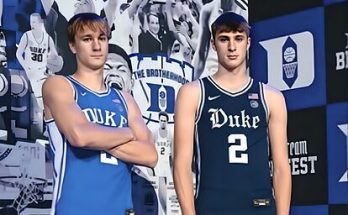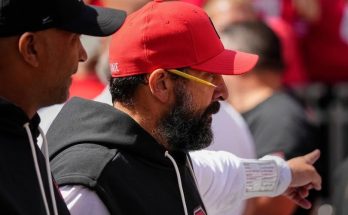In the cutthroat world of the NFL, where rosters churn with dizzying speed and player movement is a constant, one team has quietly distinguished itself by building a foundation on stability: the Denver Broncos. As the 2025 season approaches, the Broncos are poised to lead the league with an unparalleled player retention rate, a statistic that speaks volumes about their strategic approach to roster construction, effective drafting, and fostering a positive team environment.
This remarkable continuity is a significant development, especially considering the recent landscape of the Denver Broncos. Under head coach Sean Payton, who took the reins in 2023, the team has undergone a significant overhaul. After the high-profile release of quarterback Russell Wilson and the ensuing record-breaking $85 million dead-money hit to the salary cap, the Broncos were forced to operate with a “get skinny” philosophy in 2024. This meant relying heavily on their 2024 draft class, headlined by quarterback Bo Nix, and embracing a youth movement across the roster. The perception, for a time, was that Denver was navigating a full rebuild, destined for a period of significant flux.
Yet, a closer look at the numbers reveals a starkly different reality for 2025. According to Jason Fitzgerald, the insightful owner and founder of OverTheCap.com, the Denver Broncos are projected to have the highest player retention rate of any team in the NFL for the upcoming season. This isn’t just a minor statistical anomaly; it’s a profound indicator of several key strengths within the organization.
First and foremost, a high player retention rate suggests effective drafting. When a team consistently drafts well, they acquire talented players who fit their system and contribute meaningfully. These players are then more likely to develop, earn significant roles, and become long-term assets, reducing the need for constant turnover. The Broncos’ ability to project 13 of their 22 total starters on both sides of the ball to be recent draft picks underscores this point. This investment in their homegrown talent, and that talent’s subsequent development, is a testament to their scouting and player development programs. Players like Bo Nix, who had an impressive rookie season, and second-year running back Audric Estime, who overcame early fumbling issues to become a reliable power back, are examples of drafted players who are now integral to the team’s plans. Even seventh-round pick Devaughn Vele, a wide receiver who quickly assimilated the playbook, has demonstrated the team’s ability to find value late in the draft and develop those players into contributors.
Secondly, exceptional player retention is a strong indicator of a healthy and appealing team culture. Players, especially established veterans, have choices in the NFL. When a team retains a high percentage of its roster, it suggests that players are happy and motivated to stay. This happiness stems from various factors: positive locker room dynamics, effective coaching, a clear vision for the future, and fair compensation. Sean Payton has emphasized building a strong team culture, stating that “it all starts with the right people.” The Broncos’ success in retaining players suggests that Payton’s message is resonating, and the environment he is cultivating is one that players want to be a part of. Owner & CEO Greg Penner has also highlighted the importance of fostering team culture and chemistry, aligning the organization’s goals with player well-being.
The financial implications of this retention are also noteworthy. While the Broncos absorbed a massive dead-cap hit with Wilson’s departure, their ability to build around and retain a core group of players means they can be more strategic with their future cap space. Instead of constantly chasing expensive free agents to fill immediate voids, they can focus on re-signing their own talent and making targeted additions. This “build, not buy” philosophy, as described by some within the organization, prioritizes meticulous development over desperate, short-term fixes.
This strategic continuity is expected to pay significant dividends on the field. Roster continuity breeds familiarity, chemistry, and a deeper understanding of schemes. When players have played together for multiple seasons, communication improves, execution becomes more fluid, and the team can operate with a higher level of cohesion. This is particularly crucial in the complex systems run by Sean Payton. The Broncos’ offensive line, for instance, returns all five starters from 2024, providing a stable foundation for the development of Bo Nix and the running game. Similarly, the defensive line, with key starters like Zach Allen, John Franklin-Myers, and D.J. Jones returning, boasts a high degree of continuity, promising continued strength on that side of the ball.
While some fans may have been frustrated by a lack of “splashy” free-agent signings in certain positions, the high retention rate and focus on internal development signify a deeper, more sustainable long-term strategy. It reflects a commitment to patience and a belief in the players already within the system. The Broncos’ leadership believes in their young talent, and they are providing the necessary resources and coaching to help them grow. This approach, while perhaps less immediately gratifying for fans seeking quick fixes, is designed to build a consistent, competitive, and ultimately successful franchise for years to come.
In an NFL where turnover is often the norm, the Denver Broncos stand out as an anomaly, leading the league in player retention. This isn’t just a quirk of statistics; it’s a deliberate and strategic outcome of smart drafting, a focus on player development, and the cultivation of a desirable team culture. As the 2025 season draws near, this unparalleled continuity could very well be the hidden advantage that propels the Broncos towards their long-sought return to sustained success.



